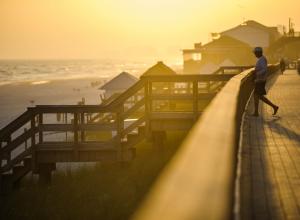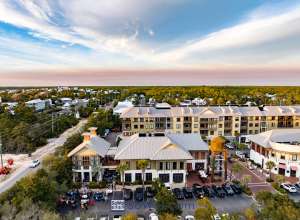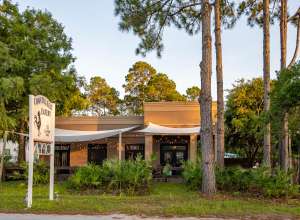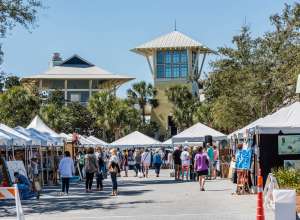Story
Protecting SoWal's Precious Coastal Dune Lakes
July 15, 2010 by Dwight Williams
Walton County takes matters into its own hands…
It now seems like a lifetime ago.
The news was bad and utterly unexpected. In late April, a few days after the Deepwater Horizon rig sank, Walton County officials were told that “in 72 hours our beaches would look like a paved parking lot,” recalled Captain Mike Barker of the Walton County Sheriff’s Office.
 County officials realized that they needed a plan, and they needed one right away. There was a lot to protect. Not only did they have the beaches and Choctawhatchee Bay, but also the coastal dune lakes. As most residents of SoWal already know, Walton County is home to fifteen of these little-known, brackish-water gems, which exist in only a handful of places on the globe.
County officials realized that they needed a plan, and they needed one right away. There was a lot to protect. Not only did they have the beaches and Choctawhatchee Bay, but also the coastal dune lakes. As most residents of SoWal already know, Walton County is home to fifteen of these little-known, brackish-water gems, which exist in only a handful of places on the globe.
The challenges were all front-loaded. There was an abundance of will to protect the lakes, but no clear consensus of how to do it. Never before had SoWal’s coastal waters faced a threat of this nature.
When local officials turned to state and federal officials, “nobody had a plan for what to do,” Barker recalled. And there was a bureaucratic swamp to navigate. A bramble of agencies, including the Army Corps of Engineers, the Department of Environmental Protection (DEP), the U.S. Environmental Protection Agency (EPA), Coast Guard, the Florida Fish and Wildlife Conservation Commissions, the Park Service and an assortment of environmental groups all had to be consulted before anything could be agreed upon.
Meanwhile, the oil was on the move.
The plan itself would prove a work in progress. Perhaps sand berms should be used instead of concrete jersey walls. But the sand would have to match in color and consistency with the Appalachian quartz sand that was already there. The lake water outflows and the well-being of turtles and shore birds also needed to be taken into account. So how do you protect such a complex and fragile ecosystem from an unprecedented assault of oil by sea?
What emerged was an imaginative plan to build temporary dams of sand at the dune lake outflows. One dam would keep the Gulf away from the lake, while the other dam would keep the lake away from the Gulf. The sand near the Gulf-side dam would be “recontoured,” or shaped to engineer specifications. Booms would be deployed on the lake side of the dams to add an additional layer of protection. The lakes would also need to be regularly checked. In May the Freeport arm of C.W. Robert’s Contracting, Inc. was awarded a $507,000 contract to build the dams at 11 of the coastal dune lakes, along with dams at the Goatfeathers outflow.
“We’ve moved in 4,200 tons of sand to Grayton Beach alone,” said Walter Tillis, a C.W. Roberts equipment operator. In all 10,000 tons of sand will be used.
Meanwhile, local beach-goers near the ever-tranquil coastal dune lakes saw the raucous arrival of yellow machines. And they didn’t mind one bit.
“Everybody has been so good,” said Ronnie Bell, the C.W. Robert’s special projects manager. “We’ve tried to stay out of everyone’s way and we apologize – but they just don’t care.” During the first weekend of work, an operator was backing up a lowboy carrying a dozer, which held up traffic in the tight quarters of Grayton Beach for several long minutes.
The traffic snarled while pedestrians were momentarily doused in diesel fumes.
“I apologized to everyone, but all they said was, ‘Just keep doing what you’re doing.’”
What they were doing had never been done before. Against all odds, it had evolved into an extraordinarily effective collaboration between local government, environmental groups, private enterprise and the citizenry of SoWal.
“The only problem I can foresee with what we have is a rain event,” said Bell. “If we had a two- or three-inch rainstorm that suddenly raises the level of the lakes, we may need to do something.”
Just before the Fourth of July weekend, those rains came. Lake water was either pumped to the Gulf, or a breach temporarily opened to allow the tea-colored water to exit into the Gulf. A few days later, the heavy equipment was back.
The rain pointed up the fact that protecting the lakes and shoreline is a process that will have to be managed over the entire course of the crisis. It’s been a remarkable experiment. And so far, in spite of all fears, it has worked.



















